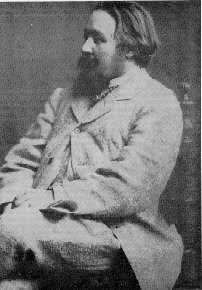
KONKOLY-THEGE MIKLÓS
Egy adott idõszakban dolgozó kutatónak mindig érdekes, hogy elõdei hogyan végezték munkájukat; milyen alap az, amelyen állva maga is tevékenykedik. Megtudhatja, hogy melyek azok a problémák, amelyek esetleg már száz évvel ezelõtt is hasonlók voltak, sok esetben meglepõdhet, hogy milyen sokat tudtak "már akkor is", más esetekben viszont azon lepõdhet meg, hogy az akkor jelentõsnek, fontosnak vélt eredmények és eszmék mára teljesen elfelejtõdtek.
Ezekbõl a szempontokból nézve fontos ez a könyv, amelyet olvasója most kezében tart. Bemutatja egy kis, de lelkes természetkutató csoport, és annak legnagyobb egyénisége, Fényi Gyula mûködését, a Kalocsai Haynald Obszervatórium kialakulását, az ott folyó munkát, egészen a megszûnéséig. Bár a csillagászat mindig kitüntetett jelentõségû volt, csekély közvetlen gyakorlati haszna miatt a Magyarországhoz hasonló kis országokban többnyire háttérbe szorult. Ma is tanulságos nyomon követni az erõfeszítéseket, amelyeket az alapítók a csillagda felszerelésére fordítottak, és legfõképpen követendõ az a lelkesedés, munkában tanúsított fegyelem, amely a régi megfigyelõkre jellemzõ volt. Fényi Gyula végezte a leghosszabb homogén, tehát változatlan megfigyelõ által, változatlan mûszerrel és módszerrel végzett megfigyeléssorozatot a protuberanciákra vonatkozólag! A jelenlegi asztrofizika ismeretanyagába az õ eredményei is beépültek, ezt ismerte el a Nemzetközi Csillagászati Unió, mikor 1971-ben egy krátert nevezett el róla a Holdon.
Manapság, amikor olyan nagy figyelmet fordítanak a magyar tudományos eredmények külföldi elismertetésére, irigylésreméltó az a lista, amely Fényi Gyula külföldön megjelent tudományos közleményeit tartalmazza, mind mennyiség, mind pedig a folyóiratok minõsége, elismertsége szempontjából. Manapság például nagyon kevés magyar csillagásznak adatik meg az a lehetõség, hogy az Astrophysical Journal lapjain publikáljon. Igaz, ennek némi pénzügyi okai is vannak. Más részrõl viszont az amerikai kutatók is akkor még jobban figyeltek az európai tudományra, a spektrohéliográf megépítõje, G. E. Hale u.i. elismeri C. Braun munkásságát e téren.
Debrecenben, a Magyar Tudományos Akadémia Csillagászati Kutatóintézetének Napfizikai Obszervatóriumában, a kezdetektõl fogva tiszteltük és ápoltuk a kalocsai hagyományokat. A napfolt-megfigyelések fennmaradt része a könyvtárunkban található, és manapság is elõvesszük idõnként, mivel a jó csillagászati megfigyelések sohasem avulnak el. Fiatal kutatóink is ismerik Fényi Gyula és a többi kalocsai csillagász munkásságát, és követendõ példaként áll elõttük a nagy elõdök hagyatéka. A jelen történeti összeállítás ennek a hagyatéknak az áttekintésében nyújt komoly segítséget.
Dr. Kálmán Béla az MTA CsKI Napfizikai Obszervatórium vezetõje
For a scientist, working in a certain epoch, it is always interesting to know, how his predecessors worked, how the base to his research was formed. He can learn that some of his problems existed already before hundreds of years, in some cases he can wonder, how much was already known in the "good old times", yet in other cases it is surprising, that ideas and results, significant and important in that time, became completely forgotten today.
This little book you are holding, dear reader, is important from this points of view. It shows us the work of a small, but enthusiastic group of scientists, and of the greatest of them, Julius Fényi; the forming of the Haynald Observatory in Kalocsa, Hungary; the scientific research there, until the end. Although astronomy always was an important discipline for both the sciences and philosophy, it was removed to the second plan in small countries, like Hungary, because its small everyday practical importance. It is interesting even today to follow the struggles of the founders of the observatory for the building and the equipment, and first of all it is worth following the enthusiasm and discipline in the scientific research, so characteristic for the old observers. Julius Fényi performed the longest homogenous (i.e. by the same observer, with the same instrument and method) observation series of the solar prominence in the world! His results are firmly built in the fundaments of the contemporary astrophysics. This was acknowledged by the International Astronomical Union in 1971, when a crater on the Moon was named in his honour.
Even today, when a great importance is given to the influence of Hungrian scientific results abroad, Julius Fényi has an impressive and enviable list of publications in international research journals, both in numbers of publications, and in quality, "impact factor" of the journals. Today, for example, very a few Hungarian astronomers can publish their results in the Astrophysical Journal. It is true, that there are some financial causes too for this situation. From the other side, in that time the American researchers more closely followed the European science, the inventor of the spectroheliograph, G. E. Hale acknowledged the earlier work of C. Braun of Kalocsa in this field.
In Debrecen, in the Heliophysical Observatory of the Hungarian Academy of Sciences, the legacy of the Kalocsa Observatory was known and honoured from the beginnings. The remaining original sunspot observations are preserved in our library, and are used sometimes even today, because the really good astronomical observations never became obsolete. Our young scientists know the work of Julius Fényi and the other astronomers from the Kalocsa Observatory and are following their legacy. This historical account gives a great help in getting acquainted with this legacy.
Dr. Béla Kálmán Head of the Debrecen Heliophysical Observatory
A Haynald Obszervatórium történetéhez
Mire jó a csillagászat? Ezt kérdezik sokszor az egyszerû emberek. A válasz erre így hangzik: a csillagok segítségével tájékozódunk, hol vagyunk a Földön.
Ez a feladat nem elégíti ki azokat, akik a szárazföldön élnek, de vannak sokan, akiknek az élete a tengeren zajlik le, ezek tudják, hogy a csillagászat valóban hasznos orientációt nyújt helyzetük megállapítására.
Olvasom a régi hajósokról, hogy õk az evezõcsapásokkal mérték a távolságot a kiinduló ponttól. Késõbb a sarkcsillag állásából ismerték meg pozíciójukat. Majd pedig a bolygó-táblázatok alapján tudták meg, hol is vannak a tengeren.
A 18. század második felében az angolok megteremtették a Nautical Almanachot. A közölt adatok alapján pontosan meg lehetett állapítani az utazás helyét a tengeren és a sivatagban egyaránt.
De meg kell jegyeznünk, hogy az orientáció megállapítása csak kezdetleges feladata volt a csillagászatnak. A csillagászokat csaknem a kezdettõl fogva a csillagok természete érdekelte. A gondolkodók ráeszméltek arra, hogy a Nap a legközelebbi csillagunk, figyeljük meg tehát a Nap fizikáját és akkor feleletet tudunk adni a csillagok természetére is.
Ezért a 19. században a csillagászok figyelme a Napon végbemenõ jelenségek felé fordult. Különös érdeklõdéssel tanulmányozta a Napot Angelo Secchi, a Vatikáni Csillagvizsgáló vezetõje.
Hasonló érdeklõdés fûtötte hazánkban Konkoly-Thege Miklóst is, amikor Ógyallán olyan mûszerekkel szerelte fel csillagvizsgálóját, amelyekkel a Napon végbemenõ jelenségeket lehetett tanulmányozni.
1878-ban Haynald bíboros érsek létesített csillagvizsgálót Kalocsán. Ennek felszereltetését is Konkoly-Thege Miklós irányította. Ezt is olyan mûszerekkel látta el, amelyek alkalmasak voltak a Nap felszínén lezajló események vizsgálatára.
A Haynald Obszervatórium tudományos eredményei elsõsorban Fényi Gyula nevéhez fûzõdnek. Fényi 32 éven át figyelte a Nap tevékenységét. Fõképpen a protuberanciákkal foglalkozott, de ráirányult figyelme a napfoltokra és a fáklyákra is.
Két érdekes protuberanciáját a külföldi szakemberek is példaként említik. Az egyiket 1885. szeptember 30-án rajzolta le Fényi Kalocsán. Ez a protuberancia rendkívüli magasságával tûnt ki, 50000 km távolságra emelkedett fel a Nap felszínétõl. A másikat, amely óriási sebességével vonta magára a figyelmet, 1885. július 15-én észlelte Kalocsán. Ez 858 km/s sebességgel emelkedett a Nap felszíne fölé.
Fényi Gyula a protuberanciákat nemcsak statisztikailag értékelte, hanem minden alkalommal megvizsgálta ezek kapcsolatát a napfoltokkal, és a Nap felszínén történõ egyéb jelenségekkel.
Tudományos megfigyeléseit a szakemberek igen megbecsülték és ezért számos tudományos társaság sorolta tagjai közé külföldön és hazánkban egyaránt.
Fényi Gyula, aki évtizedeken át kísérte figyelemmel a Nap protuberanciáit, vizsgálódásai nyomán megállapította, hogy a Napon nagyszabású tevékenység megy végbe, kitörések állandóan észlelhetõk és ezek jelei a Nap belsejében végbemenõ folyamatoknak.
A jelen könyvben a szerzõ részletesen ismerteti Fényi Gyula tudományos megfigyeléseit, melyeket 32 éven át végzett a Kalocsai Obszervatóriumban és egyúttal ezeknek kellõ értékelését is adja.
Budapest, 1986. február 26.
Dr. Tibor Mátyás a Haynald Obszervatórium igazgatója 1946 -1950 között
To the history of Haynald Observatory
What is astronomy good for? This is often asked by ordinary people. The reply to this is: we orient ourselves with the help of stars regardless where we are on the earth.
This task does not satisfy those who live on land, but there are many who spend their lives on the open seas, and they know that astronomy does indeed provide useful orientation in determining their location.
I have read about ancient mariners who had measured the distance from their starting points by counting the numbers of oar strokes. Later they were able to set their position compared to the pole star Polaris. Eventually they could determine their oceanic positions using planetary tables.
The English created the Nautical Almanach during the second half the l8th century. With the data given it was possible to precisely determine one's position either on an ocean or in a desert.
But we must note that the determination of directions had only been the initial task for astronomers. The nature of stars interested astronomers almost from the very beginning. The brilliant deduced that the Sun is our nearest star and therefore we must study its physics and then we can deduct many answers about the nature of stars, too.
Consequently during the l9th attention of many astronomers turned toward events happening on the Sun. Angelo Secchi, director of the Vatican Observatory studied the Sun with specific interest. The same interest guided Miklós Konkoly-Thege in our country when ne installed such instruments in hig observatory in Ógyalla with which he could make observations of the phenomena on the surface of the Sun.
In 1878 cardinal Haynald established an observatory at Kalocsa. Miklós Konkoly-Thege directed its construction and equipping. Here again he had a special Solar protuberance examination instrumentation installed.
The scientific results at the Haynald Observatory, on the other hand, were connected to Gyula Fényi. Fényi studied the Sun's activities for 32 years. He dealt mainly with prominences but also studied sunspots and faculae.
Two of the interesting protuberances are held as exemplary by foreign experts, The first was drawn on Sept 30th in 1895 at Kalocsa by Fényi. This prominence stood out by its unusual height - it rose 50000 km above the surface of the Sun. The other drew attention due to its great speed and it was noticed in Kalocsa on July l5th in 1895. This one rose with a speed of 858 km/s above the surface of the Sun.
Gyula Fényi did not only evaluate the prominences statistically, but in each case examined their relationship with sunspots and other events happening on the Solar surface.
His scientific observations were held in great regard by experts and thus he was given membership by several scientific societies both abroad and here at home.
Gyula Fényi who had followed prominences on the Sun for decades, according to his studies declared, that great events are taking place on the Sun, eruptions can continuously be observed and that these are indicators of processes taking place inside the Sun.
In the present book the author details the scientific observations Julius Fényi made over a period of 32 years at the Kalocsa Observatory and together with these provides their appropriate evoluation.
Budapest Február 26. 1986.
Dr. Mátyás Tibor Director of Haynald Observtory 1946 -1950
E kötet a kalocsai obszervatóriumnak állít maradandó emléket. A magyarországi csillagászatnak egy olyan korszakát idézi fel, amikor úgyszólván a semmibõl kellett újraélednie. Érdemes megismerkednünk ennek a kornak egyéb tényeivel is, mert ezek a Kalocsáról alkotott képet is teljesebbé teszik.
1849 tavaszán a Habsburg-monarchia ellen harcoló magyar forradalmi sereg Buda várát ostromolta. A várat védõ osztrák csapatok a gellérthegyi magyar állásokat is erõs tûz alatt tartották. Lövedékeik felgyújtották a hegy ormán álló Egyetemi Csillagvizsgálót, s az teljesen kiégett. Késõbb helyreállítható lett volna, de a magyar szabadságharc után a Habsburg-hadsereg a Gellérthegyen egy új erõdítményt - Citadellát - építtetett, s azt megrakta ágyúkkal, hogy egy újabb forradalmi megmozdulás esetén onnan lõhesse a várost. Emiatt a leégett csillagvizsgáló maradék falainak is pusztulniuk kellett.
Mindez tragikus veszteséget jelentett a magyar csillagászat számára, amelynek ez volt akkoriban az egyetlen korszerû, európai színvonalú obszervatóriuma. A tehetséges és szorgalmas Albert Ferencnek, aki 25 évig dolgozott a Gellérthegyen, nagy reményekre jogosító tudományos karrierje tört ketté egyik napról a másikra. A csillagászat tudományos mívelése több mint két évtizedig szünetelt Magyarországon.
Az újraéledés úgy kezdõdött, hogy 1871-ben - tehát négy évvel az 1867-es osztrák-magyar kiegyezés után - egy magyar földesúr felállított kastélyának erkélyén egy kis távcsövet, hogy azzal saját kedvtelésére az égboltot vizsgálhassa. Akkor még maga sem sejtette, hogy ezzel a modern magyar csillagászat fejlõdésének vetette meg az alapját.
Ez a földesúr Konkoly-Thege Miklós volt, kastélya pedig Ógyallán állt, egy olyan magyar faluban, melyet késõbb - 1920-ban - Csehszlovákiához csatoltak.
Konkoly a pesti és berlini egyetemen tanult fizikát. Berlini csillagászattanára nem kisebb tudós volt, mint Johann Franz Encke.
Néhány hónappal azután, hogy hozzákezdett csillagászati vizsgálódásaihoz, Konkoly elhatározta, hogy ezt a tevékenységet élethivatásnak választja. Mivel egész életében az alaposan elõkészített feladatokat kedvelte, ezért mindjárt kezdetben nagy körültekintetéssel fogott hozzá a terv valóra váltásához. Felkereste az akkori legjelentõsebb európai csillagvizsgálókat, hogy tapasztalatokat szerezzen.

KONKOLY-THEGE MIKLÓS
Személyes kapcsolatot teremtett az akkori legjobb csillagászati mûszereket készítõ üzemek vezetõivel is. Az alapos elõkészítésnek is köszönhette, hogy az újonnan létesült ógyallai csillagvizsgáló hamarosan a nemzetközileg is számontartott intézmények közé került.
Ma már szinte hihetetlennek tûnik az a rohamos fejlõdés,
melyet elért.
1871-ben még csak néhány kisebb mûszer
állt a kastély erkélyén.
1873-ban már tanulmánya jelent meg a Monthly Notices
c. neves csillagászati lapban.
1874-ben elkészült az elsõ kupola a kastély
kertjében, a londoni Browning cégtõl vásárolt
10 hüvelykes tükrös távcsõvel.
1876-tól kezdõdõen Konkoly már rendszeresen
közölte ógyallai megfigyeléseit a Magyar
Tudományos Akadémia által kiadott "Értekezések"-ben.
1879-tõl az új csillagvizsgálónak
önálló kiadványa is megjelent.
(Beobachtungen angestellt am Astrophysikalischen
Observatorium in Ógyalla in Ungarn. 1 - 16, Halle 1879-1894)
A Browning-féle reflektoron kívül (amelyet
Konkoly 1882-ben Gothard Jenõnek adott át) az alábbi
mûszerek voltak az ógyallai csillagvizsgálóban:
Egy 6 hüvelykes refraktor, Merz-optikával, Cooke-féle
mechanikával.
Egy 4 1/2 hüvelykes refraktor, Merz-optikával, Cooke-féle
mechanikával.
Egy saját tervezésû és kivitelezésû
üstököskeresõ.
Egy 10 hüvelykes refraktor.
Ez, utóbbiról tudni kell, hogy amikor Konkoly átadta Browning-féle reflektorát Gothardéknak, ennek helyébe lencsés távcsövet kívánt felállítani, de az elkészítést a jól bevált mûhelyek - Browningék Londonban, Cooke-ék Yorkban - csak hosszabb határidõre vállalták volna. Így Konkoly a saját mûhelyében készített el egy 10 hüvelykes refraktort, s azt Merz-optikával szerelte fel.
Napfogyatkozások megfigyelésére Konkoly és munkatársai fotoheliográfot használtak, ennek optikai része a müncheni Steinheil cégnél készült.
Mindezekhez még több kisebb mûszer társult: egy Browning-féle spektroszkóp, egy idõmeghatározásra használt passzázscsõ stb.
Spektroszkópiai vizsgálataihoz Konkoly 25-féle spektroszkópot szerzett be. Ez akkor az egyik leggazdagabb ilyen gyûjteménynek számított a világon.
Az ógyallai csillagvizsgálót mindez alkalmassá tette az akkor szokásos asztrometriai feladatokra, és a rohamosan fejlõdõ asztrofizikai vizsgálatok végzésére is.
Konkoly tudományos felkészültségének, a csillagászat gyakorlatában való jártasságának hû képét adják kézikönyvei, melyet évtizedekig használtak - még tankönyvként is - Európa szerte.
(Praktische Anleitung zur Anstellung astronomischer Beobachtungen mit Besonderer Rücksicht auf die Astrophysik, Braunschweig, 1883. - Anleitung zur Himmelsphotographie, Halle 1897. - Handbuch für Spectroskopiker im Cabinet und am Fernrohr für Anfänger auf die Gebiete der Spectralanalyse. Halle, 1890)
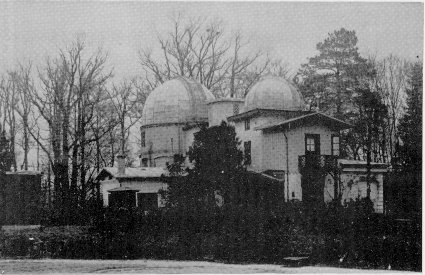
AZ Ó-GYALLAI CSILLAGVIZSGÁLÓ
Európai tanulmányútján teremtett személyes jó kapcsolatait Konkoly állandó levelezés és kölcsönös látogatások révén igyekezett ápolni. Számos külföldi csillagász tartózkodott hosszabb-rövidebb ideig Ógyallán, köztök Hermann Kobold, a kieli egyetem tanára, az Astronomische Nachrichten késõbbi szerkesztõje, aki csaknem három évig dolgozott az itteni csillagvizsgálóban.
Ógyalla intézményes kapcsolatai is kiépültek a külföldi csillagászati intézetekkel. Az új csillagvizsgáló részt vett a nemzetközi tudományos programokban. Ez is elõsegítette, hogy a magyar csillagászok egész nemzedéke nevelõdjék itt a tudomány korszerû színvonalán. Itt kezdte meg pályáját dr. Kövesligethy Radó, aki aztán Eötvös Loránd munkatársa lett a budapesti egyetem kísérleti fizikai tanszékén, majd a késõbb felállított kozmográfiai tanszék professzora; évekig itt mûködött dr. Harkányi Béla, aki mint kiváló asztrofizikus a párizsi obszervatóriumban is dolgozott az 1890-es években, e század elején pedig az asztrofizika tanára volt a budapesti egyetemen; Ógyalláról indult el dr. Tass Antal is, az 1921-26-ban épült Svábhegyi Asztrofizikai Obszervatórium elsõ igazgatója, aki Konkoly eleven kutató szellemét örökítette át a Budapesten megalakult állami csillagászati obszervatórium falai közé.
Hogy közelebbrõl lássuk, milyen munka folyt Konkoly-Thege Miklós idejében Ógyallán, ejtsünk néhány szót az intézet tudományos programjáról.
A csillagda mûködése kezdetben a napfoltok vizsgálatára, azok helyzetének meghatározására, a Nap protuberanciáinak megfigyelésére, idõmeghatározásra és a hullócsillagok észlelésére szorítkozott, de késõbb más programokkal is bõvült.
Tekintettel az intézet gazdag spektroszkóp-gyûjteményére, sokirányú spektroszkópiai vizsgálat folyt benne. 1874 és 1911 között Konkoly készítette a legtöbb üstökös-színképet. Spektroszkópiai munkái közül legjelentõsebb az ógyallai katalógus, amelyet Kövesligethyvel együtt készített, s amely 2202 állócsillag színképének meghatározását tartalmazza (Halle, 1887) .
Rendszeres megfigyelések folytak Ógyallán a bolygók topográfiájának felderítésére, figyelték a Jupiter felületi változásait, különösen a bolygó akkoriban felfedezett "vörös foltjának" viselkedését. Hagyományos észlelési program is folyt: üstököspozíciók meghatározása, Vénusz és Merkur átvonulások, nap- és holdfogyatkozások, csillagfedések tanulmányozása.
Konkolynak azonban szívügye volt a magyarországi csillagászat szélesebb körû fejlesztése is. Igyekezett másokat is rábeszélni arra, hogy kövessék az ógyallai példát.
1879-ben egy székesfehérvári iparkiállítás alkalmából megismerkedett, s mindjárt össze is barátkozott a Gothard-fivérekkel, Jenõvel és Sándorral. Útjuk Székesfehérvárról egyenesen Ógyallára vezetett. A Gothard-testvérek, akik már eddig is jártasak voltak különféle fizikai eszközök készítésében, elhatározták, hogy herényi birtokukon õk is berendeznek egy csillagvizsgálót. Gothard Jenõ egyébként elõzõleg a Politechnikai Fõiskolát végezte el Bécsben, s csillagászati gyakorlatra az ottani obszervatóriumban tett szert.
Konkoly, mint említettük, 1882-ben átadta Browning-féle reflektorát Gothardéknak. Ezzel a mûszerrel kezdték meg csillagászati megfigyeléseiket Herényben még ebben az évben. Elsõ - és egyben utolsó - önálló intézeti kiadványukat 1883-ban jelentették meg. Kutatásaik eredményeit ezután a Magyar Tudományos Akadémia közleményeiben és neves külföldi lapokban (Monthly Notices, Astronomische Nachrichten stb.) tették közzé.
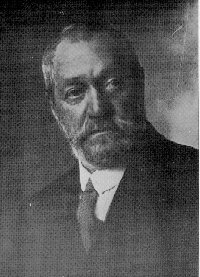
Dr. KÖVESLIGETHY RADÓ
Kettejük közül Gothard Jenõ volt a képzettebb és alighanem a tehetségesebb is. 1886-ban õ fedezte fel - fotografikus úton - a Lyra gyûrûs köd központi csillagát. Spektroszkópikus vizsgálatai is úttörõek voltak. Több nóváról (Nova Aurigae, Nova Persei stb.) és kozmikus ködrõl készített spektrumfelvételeket.
Mûszerek készítéséhez is kiválóan értett. Passzázs mûszert szállított például a heidelbergi csillagvizsgálónak, spektrográfot Josef Maria Eder bécsi mûegyetemi tanárnak.
Õ is élénk kapcsolatot tartott külföldi csillagászati intézményekkel. Konkollyal együtt több személyes látogatást is tett európai csillagvizsgálókban. 1896-ban - dr. Harkányi Béla társaságában - részt vett a chicagói világkiállításon. Ez alkalommal több nagy amerikai csillagvizsgálóba is ellátogattak.
Konkoly-Thege Miklós 1881-ben lett a londoni Royal Society tagja. A Gothard testvérek két évvel késõbb részesültek ebben a megbecsülésben.
A Magyar Tudományos Akadémia 1884-ben sorolta Konkolyt rendes tagjai közé. Gothard Jenõ 1890-ben kapta meg a levelezõtagságot.
Konkoly szerepét a kalocsai csillagvizsgáló létesítésében, munkájának megindításában Mojzes Imre munkája részletesen tárgyalja. Ezért itt csak arra térek ki, hogy az ógyallai, kalocsai és a herényi példa nyomán 1886-ban egy negyedik csillagvizsgáló is épült Magyarországon. Ennek születésérõl Konkoly - akinek ebben is jelentõs része volt - így adott hírt egy cikkében: "Hamar meggyõzõdhetünk arról, hogy egy jeles magyar fõúr és annak magas mûveltségû és tudományt kedvelõ neje egy negyedik magáncsillagdát fog létrehozni hazánkban... a fõúri család most minden idejét a Nyírségben tölti, fogadtak egy fiatal csillagászt, aki napi két órás elõadást tart nekik, amelyen a lelkész és a gyógyszerész is részt vesz."
Már ebbõl a néhány szóból is világosan kiderül, hogy a kiskartali csillagvizsgáló egyvalamiben lényegesen különbözött az elõzõ háromtól, abban ugyanis, hogy alapítói nem rendelkeztek a csillagászat tudományos míveléséhez szükséges alapismeretekkel. Az intézményben dolgozó képzett csillagászok így alkalmazottként mûködtek a bõkezû mecénás mellett.
Báró Podmaniczky Géza és felesége, gróf Dégenfeld- Schomburg Berta azonban egyébként rendkívül mûvelt emberek voltak. Kiskartali könyvtárukban nem kevesebb, mint 35000 kötetet gyûjtöttek össze, köztük sok értékes, hajdan a gellérthegyi csillagvizsgáló tulajdonát képezõ csillagászati mûvet is. Ennek a gazdag állománynak a szakszerû könyvtári feldolgozása a grófnõ nevéhez fûzõdik.
A csillagászat is több volt számukra puszta szórakozásnál. A fennmaradt kiskartali észlelõkönyvek tanúsága szerint Podmaniczky báró még 1895-ben is rendszeresen végzett csillagászati megfigyeléseket a kiskartali obszervatóriumban. A Magyar Tudományos Akadémia is csillagászati tevékenységéért választotta tagjai közé.
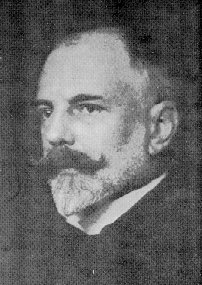
Dr. HARKÁNYI BÉLA
A bárónõ egy szerencsés véletlen folytán a csillagászat egyetemes történetébe is beírta nevét. Dr. Kövesligethy Radó, a kiskartali csillagvizsgáló elsõ obszervátora így emlékezett meg errõl az eseményrõl: "Az Androméda köd, ezen rendesen köd nevével illetett, erõs nagyítással sem felbontható csillaghalmaz, úgy látszik, Marius által történt felfedeztetése óta kimutathatólag nem változott, míg 1885. aug. 22-én észlelõink egyik legbuzgóbbika benne egy addig nem ismert fényfejlõdést nem fedezett fel, melynek okául egy új csillag felléptét jelölte meg."
Az S Andromedaet, ezt az elsõ ismert extragalaktikus szupernóvát az ír Ward látta meg elõször 1885. aug. 19-én, de Podmaniczkyné Dégenfeld Bertát minden nagyobb tanulmány, mely e csillaggal foglalkozik, megemlíti az elsõ felfedezõk között.
Visszatérve Konkoly-Thege Miklósra, õ nemcsak bábáskodott a magyarországi új obszervatóriumok megszületése körül, hanem mindvégig szervezõje maradt az õket összekapcsoló tudományos programoknak is. Ilyen közös feladat volt például az elõbb említett szupernóva rendszeres megfigyelése. Dr. Kövesligethy emellett spektrumfelvételt készített róla, Gothard Jenõ pedig fotografikusan is megörökítette.
A kiskartali csillagvizsgáló fõ mûszere egyébként egy 19 cm-es refraktor volt. Mechanikai felszerelése a yorki Cooke cégtõl származott, és Merz-optikával volt ellátva, mint az ógyallai mûszerek jelentõs része. 1922-ben a budapesti Svábhegyen megalakult - 1926-ra teljesen felépült - új obszervatórium örökölte. Itt még évtizedekig használták, korszerûbb mûszerekkel együtt.
A kiskartali program az ógyallaihoz csatlakozott (ködök, bolygók rajzokon való megörökítése, a Nap felszínén zajló események vizsgálata, meteorraj-észlelés, napfogyatkozások, holdfogyatkozások, csillagfedések tanulmányozása stb.). Mivel az intézet elsõ obszervátora, a spektroszkópiai kutatásoknak is jeles szakembere volt, így eleinte ilyen jellegû vizsgálódások is folytak Kiskartalon, s ezek eredményeként az új intézet kiadványaként jelent meg Kövesligethy fontos szakkönyve: "Grundzüge der theoretischen Spectroalanalyse". (Halle, 1880)
Kövesligethy számára azonban Kiskartal nem adhatott tehetségéhez méltó alkotómûhelyt. Budapestre került - mint már említettük - báró Eötvös Loránd mellé az egyetem kísérleti fizika tanszékére. Késõbb nyilvános rendes egyetemi tanár lett a kozmográfiai tanszéken.
1893-ban új, tehetséges fiatal csillagász került Kiskartalra, a 22 éves Wonaszek A. Antal. Nagy buzgalommal fogott az észlelõ munkához. Nagy tervei voltak, szerette volna a kis obszervatóriumot nemzetközi szintre emelni, s e célból levelezés útján közvetlen kapcsolatot keresett külföldi csillagvizsgálókkal. Levelezett többek közt a híres francia csillagásszal Camille Flammarionnal is, s népszerûsítõ könyveinek példájára maga is hasonló munkába fogott. Astronomia c. könyve 1901-ben jelent meg Pozsonyban. Kiskartali megfigyeléseit, csillagászati tanulmányait két intézeti kiadványban jelentette meg (1895, 1901)
1901-ben bekövetkezett korai halála véget vetett a kiskartali csillagvizsgáló fejlõdésének. "Én egy jó barátot és egy nagy tehetséggel felruházott munkását a tudománynak vesztettem, a szép jövõ a magas tudomány fürkészésében most elveszett" - írta az özvegynek küldött részvétlevelében Podmaniczky báró.
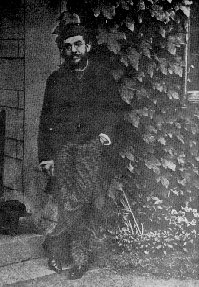
GOTHARD JENÕ
A 19. század utolsó évtizedében már minden magyarországi mecénás elõtt világossá vált, és ez a mindennapi munka szerény eredményeiben is megmutatkozott, hogy a csillagászat rohamos fejlõdésével egyre nehezebb lépést tartaniuk. Ez volt az Alvan Clark által készített hatalmas új távcsövek kora. A magyarországi földesúri jövedelmekbõl ilyesmire nem telt. Különösen szenvedett ettõl a ténytõl Konkoly, aki a tudományban mindig a legkorszerûbb feladatokat kereste és vállalta. Ebben az idõszakban már csak a milliomosok által létrehozott alapítványok, illetve az államkincstárak adhattak biztos anyagi alapot az igényesebb csillagvizsgálóknak.
Konkoly-Thege Miklós 1890-ben elvállalta az Országos Meteorológiai Intézet igazgatói állását, Gothard Jenõ pedig 1895-tõl a Vasvármegyei Elektromos Mûvek mûszaki igazgatója lett. Nem szánhatták többé minden idejüket, erejüket a csillagászatra. Konkoly ezekben az években mindinkább arra törekedett, hogy csillagvizsgálóját állami kezelésbe adja. Javaslatát azonban többször is visszautasították. Az 1880-as, 90-es évek Magyarországa a viszonylag szegény államok közé tartozott. A tõkés fejlõdés lendülete nem volt a nyugat-európaihoz vagy az észak-amerikaihoz mérhetõ. A tudományok - s ezen belül az alapkutatások - támogatására csak lassan csordogált a pénz.
Konkoly írta 1897-ben: "A magyar csillagászat késik és mindaddig késni fog, míg a jelenleg élõ irányadó körök utolsója nem lesz a Walhallában."
Hogy államosítási terveinek nyomatékot adjon, Konkoly az "Astronomische Gesellschaft" 1898. évi közgyûlésének színhelyéül Budapestet javasolta. Az ülések a Magyar Tudományos Akadémia helyiségeiben folytak le. Talán ez is szerepet játszott benne, hogy 1899-ben végre megalakulhatott a Konkoly alapítványú Magyar Királyi Csillagvizsgáló Intézet. Az ügyvezetõi igazgatói tisztet - meteorológiai intézeti állása mellett - Konkoly töltötte be. Az ügyvezetõ aligazgató dr. Kövesligethy Radó lett.
Az állami kezelésbe vétel után az ógyallai csillagvizsgáló új mûszereket kapott, s ennek folytán tudományos programja is módosult. A csillagászati fotometria ezekben az években igen gyors fejlõdésnek indult. Hogy rendszeres fotometrikus munkához kezdhessenek, az ógyallai csillagvizsgáló számára elsõként egy Töpfer-féle ékfotométert rendeltek (Gothard Jenõ találmánya), majd ezt a mûszert egy kisebb és egy nagyobb Zöllner-féle fotométer követte. Így kezdõdhetett el Ógyallán a változócsillagok kutatása. Az elért eredményeket az Astronomische Nachrichten hasábjain rendszeresen nyilvánosságra hozták. Az intézet saját kiadványában két nagyobb jelentõségû munka jelent meg: "A déli csillagos ég photometriai megfigyelése (0°-tól 10°)" c. fotometriai katalógus, és a "Változó csillagok photometrikus megfigyelése" c. munka, amely az ógyallai eredményeket tartalmazta.
Századunk elején Karl Schwarzschild sikeres kísérleteivel megindult fotografikus asztrofotometria mûvelésébe is belekapcsolódott Ógyalla. A csillagvizsgáló refraktoraira fotografikus távcsövet szereltek fel.
1913-ban felkérték a Heyde céget, hogy az akkori követelményeknek legjobban megfelelõ új 30 hüvelyk átmérõjû tükrös távcsövet készítsen az obszervatórium részére, de a háború kitörése miatt ezt már nem kaphatta meg az intézet. Ógyalla 1920-ban csehszlovák felségterület lett.
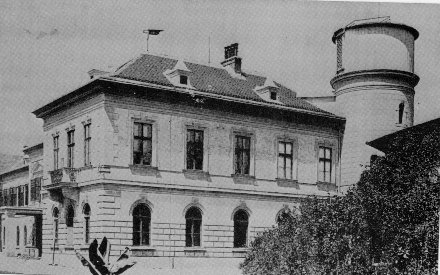
A GOTHARD OBSZERVATÓRIUM HERÉNYBEN
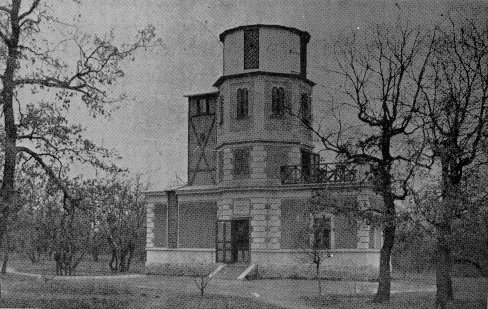
A KISKARTALI CSILLAGVIZSGÁLÓ
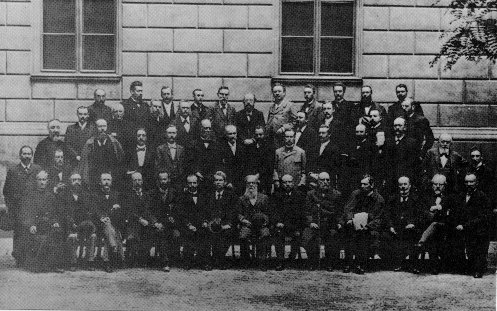
AZ "ASTRONOMISCHE GESELLSCHAFT" 1898. ÉVI BUDAPESTI
ÜLÉSÉNEK RÉSZTVEVÕI
1921 végén Budapesten az akkori Svábhegyen - ma Szabadsághegy - felépült az ottani elsõ kupola egy Heyde-féle 20 cm nyílású refraktorral. 1922-ben a második kupolában kapott helyet a Kiskartalról származó Cooke-féle távcsõ. 1926-ra az új állami csillagvizsgáló intézet központi épülete is elkészült.
Végül néhány összefoglaló gondolatot szeretnék fûzni az elmondottakhoz.
Egy nagyhírû intézményt - mint amilyen a gellérthegyi csillagvizsgáló volt valaha - könnyû szétlõni, s még a maradványait is felrobbantani. Nem kell hozzá sok idõ, csak a szellem javainak a megvetése ilyen-olyan katonai vagy hatalmi szempontok miatt. De az okozott károk helyrehozatalához évtizedek munkája kell, és a lemaradást talán sohasem sikerül igazán behozni.
Van azonban egy vigasztaló tanulsága is annak, amit az eddigiekben papírra vetettem, és ezt így foglalhatnám össze: a régiek áldozatos munkájának szelleme szerencsés esetben átöröklõdhet az utókorra.
A Svábhegyen felépült új csillagvizsgáló munkatársai megõrizték és tovább gyarapították Konkoly szellemi hagyatékát. A Gothard-testvérek emlékét a budapesti Eötvös Loránd tudományegyetem kötelékében mûködõ szombathelyi Gothard Obszervatórium õrzi. Kiskartal csillagászati könyvgyûjteménye pedig, amely ma a Csillagászati Kutató Intézet féltett kincse - naponta emlékezteti a jelenkor csillagászait egykori létrehozóinak bõkezûségére.
Vargha Domokosné
Hungarian Astronomy of the Era
This volume will create a permanent memorial to the Observatory at Kalocsa. It recalls that period of Hungarian astronomy, from which everything began. Its worth knowing other facts about this period as well, because this will fill out the scenario around Kalocsa.
In the spring of 1849 the revolutionary forces fighting the Habsburg Monarchy, were storming Buda Castle. The Austrian forces defending the castle put the Hungarian positions located on the Gellért Hill under heavy fire. Shells ignited the University Observatory situated on the summit of the Gellért Hill, and that was completely gutted. Later it could have been restored, but after the Hungarian war for Liberty the Habsburg army built a new fortress on Gellért Hill - the Citadell - and packed it with cannons to be able to shoot at the city in case of a new uprising. For this reason the remaining walls of the burnt out Observatory had to be demolished, too.
This was a tragic loss for Hungarian astronomy, since this was the only modern European level observatory of the time. The talented and diligent Ferenc Albert, who worked here for 25 years, had his filled-with-hope career broken in two overnight. The development of scientific astronomy was held back for two decades in Hungary.
Revitalization started in 1871 i.e. four years after the Austrian-Hungarian compromise - a Hungarian estate owner erected a small telescope on the balcony of his castle, where he had the opportunity to observe the sky at his pleasure. He then did not know that he had established the basis of modern Hungarian astronomy.
This landowner was Miklós Konkoly-Thege, and his castle was located in Ógyalla, a Hungarian village, which was connected to Czechoslovakia in 1920.
Konkoly studied physics at the university of Pest and Berlin. His astronomy professor in Berlin was not other than Johann Franz Encke.
A few months after Konkoly decided to start his astronomical observations, he decided that this was his calling in life. All during his life he preferred well prepared tasks. For this reason he spent a great amount of time in working out the details of his plans. He went to the largest observatories existing in Europe at that time, to gain experience. He personally became familiar with the top instrument manufacturers' experts too. Thanks to the careful preparation, the newly created observatory of Ógyalla soon became internationally recognized.
Today it seems incredible, how he could achieve such rapid development
at that time.
In 1871 only a few smaller instruments stood on the balcony of
the castle.
By 1873 his studies were published in the famous publication "Monthly
Notices".
By 1874 the first dome was built in the garden of the castle and
equipped with 10 inch reflecting telescope, bought from the Browning
Company, London.
Starting from 1876 Konkoly had regularly published his observations
in the "Treatise" published bytte Hungarian Academy
of Sciences.
In 1879 the new observatory published its own publication (Beobachtungen
angestellt am Astrophysikalischen Observatorium in Ógyalla,
1 -16, Halle 1879-1894).
Besides the Browning type of reflector (which Konkoly gave to Jenõ Gothard in 1882) the following types of instruments were located in the Ógyalla Observatory:
A 6-inch refractor, with Merz optics, and Cooke mounting
A 4.5-inch refractor with the above features
A comet-sweeper of his own design
A 10-inch refractor
It is worth knowing about the latter that Konkoly transferred his Browning's reflector to Gothard's team in place of a refractor type telescope he wished to install but due to the lengthy delivery given by Browning Works of London and by Cookes of York, Konkoly took it upon himself to have the 10-inch refractor made in his own workroom, and had it equipped with Merz-type optics.
To observe Solar eclipses Konkoly and his collegues used a photoheliograph. Its optical portion was made by the Steinheil Company of Munich.
To all of these devices located at the observatory, several smaller instruments can be added: a Browning-type spectroscope, a transit instrument etc.
For his spectroscopic examinations Konkoly obtained 25 types of these devices. Then it was one of the richest collections in the world.
This made the Ógyalla Observatory suitable for the applied astronomical tasks and the rapidly developing astrophysical viewing.
Konkoly's handbooks demonstrated his scientific preparedness and his vast experience in the practice of astronomy, were they used for decades - even as student material - throughout Europe. (Praktische Anleitung zur Anstellung astronomischer Beobachtungen mit Besonderer Rücksicht auf die Astrophysik, Braunschweig, 1883. - Anleitung zur Himmelsphotographie, Halle, 1897. - Handbuch für Spectroskopiker in Cabinet und am Fernrohr für Anfänger auf die Gebiete der Spectralanalyse. Halle, 1890)
Konkoly cultivated those contacts he had established during his study tours of Europe, through correspondence and exchange visits. Quite a few foreign astronomers stayed at Ógyalla for various periods of time. Among those was Hermann Kobold, Professor of the Kiel University and later editor of the Astronomische Nachrichten, who spent three years at this Observatory.
The institutional connection with foreign institutes was also established. The new observatory participated in international programs. This helped train a whole generation of Hungarian astronomers here in the most advanced science. Dr. Radó Kövesligethy, assistant of Lorand Eötvös on the Experimental Physics Department of University of Budapest, who later he became the Professor of Cosmographics Faculty. Dr. Béla Harkányi, who as an outstanding astronomer had already worked at the Paris Observatory in the 1890-s, and at the beginning of this century was the Professor of Astronomy at the Budapest University. Dr. Antal Tass, the first director of the Observatory on Svábhegy built in 1921-26, also started his career at Ógyalla; he inherited and transferred Konkoly's lively scientific spirit to within the walls of the state Astronomical Observatory located in Budapest.
So that we may more closely examine the kind of work being carried out in Konkoly-Thege's time at Ógyalla, let's say a few words about the scientific program of the Institute.
In the beginning the observatory restricted this operation to the study of sunspots, determination of their positions, study of solar prominences, determination of precise time, the observations of "meteor-showers", but later other programs were added.
Due to the rich collection of spectroscopes, many-sided spectroscopic research was carried out in the Institute, and between the years 1874 and 1911 Konkoly was able to conduct most of the colour spectrum surveys. Among his spectroscopic works the Ógyalla Catalog is the most significant, which he had prepared together with Kövesligethy, and which contained 2202 stellar spectrae (Halle, 1887)
Regular observations at Ógyalla were directed at determining the topography of the planets, including the surface change of Jupiter, especially after the discovery of the behaviour of the great "red spot".
A traditional searching program was also followed: Positions of comets, Transits of Venus, Mercury, eclipses of the sun and the moon, and occultations of stars.
Konkoly made it his personal issue to broadly develop astronomy in Hungary. He made every attempt to convince others to emulate the example presented by Ógyalla.
In 1879, during an industrial exhibition at Székesfehérvár he became acquainted and developed a friendship with the Gothard brothers, Jenõ and Sándor. Their next trip from Székesfehérvár was straight to Ógyalla. The Gothard brothers, who were already familiar with several types of instruments, decided to install an observatory on their estate in Herény. Incidently Jenõ Gothard completed his studies at the Polytechnical Institute in Vienna previously, and had gained experience at that astronomical observatory.
Konkoly, as we have mentioned, transferred his Browning type reflector to the Gothard's. With this instrument they started off their observations in Herény in that very year. Their first and last institutional publication was issued in 1883. Henceforth the results of their research were published in the Proceedings of the Hungarian Academy of Sciences and in well known foreign journals (Monthly Notices, Astronomische Nachrichten, etc.).
Between them Jenõ Gothard was the better educated and who knows the more talented. In 1886, using photography, he discovered the central star in the Lyra ring nebula. He pioneered several types of spectroscopic research, and prepared spectroscopic photographs of several novae (Nova Aurigae, Nova Persei etc.) and cosmic clouds.
He was an expert of instrument making. He delivered a passage instrument to the Heidelberg Observatory and a spectrograph to professor Josef Maria Eder of the Vienna Technical University.
He also kept close contacts with the astronomical institutes across the borders. He made several personal visits to European observatories together with Konkoly. In the company of Dr. Béla Harkányi, in 1896 they participated in the Chicago World Fair, after which they toured several American observatories.
Konkoly-Thege was made member of the Royal Society of London in 1881. The Gothard brothers shared in the same honours two years later.
Konkoly became full member of the Hungarian Academy of Sciences in 1884. Jenõ Gothard became a corresponding member in 1890.
The work of Imre Mojzes details the role Konkoly had in the establishment and the starting work of the observatory in Kalocsa. For this reason I will only mention that after the establishment of the observatory at Ógyalla, Kalocsa and Herény a fourth one was built in Hungary in 1886. About its birth Konkoly - who also had his hands in its creation - wrote thus: "Once we are convinced, that an excellent Hungarian nobleman and his most educated and scientifically inclined wife, will build a fourth private observatory in Hungary... the noble family now spend all their time in the Nyírség, employs a young astronomer who spends two hours a day instructing them, the clergyman, and the druggist".
From these few words it become quite clear, that the observatory at Kiskartal in one way differed from the three previous onos, namely that its founders did not possess the basic astronomical knowledge needed to go developed astronomy. The trained astronomers at the observatory were employees fortunate to be in their field thanks to the generosity of their patron.
Baron Géza Podmaniczky and his wife, Baroness Bertha Dégenfeld-Schomburg, were otherwise highly cultured. In their library at Kiskartal there were non fewer than 35000 books, many of which were quite valuable. Some were at one time part of the observatory library which used to exist on the Gellért Hill. The expert arrangement of this rich collection can be attributed to the Baroness.
Astronomy was much more than pure entertainment to them. Among the notes left behind from Kiskartal, Baron Podmaniczky regularly conducted astronomical observations even in 1895. The Hungarian Academy of Science voted him as its full member due to his astronomical observations.
The Baroness had her name written into the everlasting annals of astronomy by chance too. Dr. Radó Kövesligethy, the first astronomer of Kiskartal, wrote in the following manner:
"The Andromeda nebula, this could only be properly called a nebula cannot be brocken into stars with the strongest magnification, appears, since its discovery by Marius, has not changed, but on Aug. 22nd in 1885 one of our most keen observers noticed a bright spot not seen ever before, and suspected to be the birth of a new star."
Though the Irishman Isaac Ward discovered the S Andromedae the first known extragalactical supernova first on Aug. 19 in 1885, Podmaniczky's wife's name Berta Dégenfeld is mentioned in any of the more detailed astronomical reports, as one of the first discoverers.
Getting back to Konkoly-Thege, he not only participated in the birth of new observatories in Hungary, but also remained the organizer of scientific programs connecting them. The regular observation of the previously mentioned supernova was such a common task. Besides this Dr. Kövesligethy made spectroscopic investigation on it, and Dr. Jenõ Gothard prepared photographs on it.
Otherwise the main instrument of the Kiskartal Observatory was a 19 cm refractor. The mechanical equipment originated from the York Cooke Company, and it too was fitted with Merz-type optics, as a major portion of the Ógyalla instruments had been. In 1922 the new observatory was established in Budapest and construction was concluded in 1926, where they inherited the main instrument from Kiskartal, which they used for decades along with several more current instruments.
The Kiskartal program was joined to that of Ógyalla. (Cosmic clouds, planets were drawn, the vents on the surface of the Sun were studied, meteor-showers, eclipses of the Sun and the Moon were examined along with occultations and so on.) Since the best observer of the observatory was also an excellent spectroscopist, in the beginning this kind of studies was also conducted in Kiskartal. As the publication of Kiskartal Observatory was published dr. Kövesligethy's work with the title "Grundzüge der theoretischen Spectralanalyse". (Halle, 1880)
For Kövesligethy on the other hand Kiskartal could not fully utilize his talents. He arrived in Budapest as we mentioned before to work beside Baron Lorand Eötvös in the Experimental Physics Faculty, and here later he became the full professor of Cosmographics Faculty.
In 1893 a new young talented astronomer arrived at Kiskartal - the 22 year old Antal A. Wonaszek. He immediately started observations with great fervour. He had great plans. He wanted to lift the little observatory to international level and with this aim he established contacts by correspondence with foreign observatories. Among them he corresponded with the world famous French astronomer Camille Flammarion as well and followed his example in writing popular books. His book entitled "Astronomia" was published in Pozsony, in 1901. He published his Kiskartal observations in two of the institutional publications in 1895 and in 1901.
His early passing away in 1901 halted the development of the Kiskartal Observatory. "I lost a good friend and an immensely talented person he has been lost to the bright future and the lofty goal of science" - wrote Baron Podmaniczky in his condolences to the widow.
By the last decade of the l9th century, and the modest results of each day's work made it sufficiently clear to all Hungarian Patrons that keeping pace with the rapid development of astronomy is quite difficult. This was the time when Alvan Clark made his large telescopes. The income of the estate owners was insufficient for this. Konkoly suffered from this the most because he always went after the most advanced scientific tasks. It was a time for the millionairs and government coffers to ensure adequate financing for the major observatories.
In 1890 Konkoly-Thege became director of the National Meteorological Institute, while from 1895 Jenõ Gothard became the technical director of the Vasvármegye Electric Works.
They could no longer spend all of their time on astronomy. During these years Konkoly strove to transfer his observatory into government hands. This recommendation was rejected several times. In the 1880's and 1890's Hungary was held to be relatively poor. The development of capital could not be compared to those of Western Europe or North America. Money for science - and within this basic science - trickled very slowly.
In 1897 Konkoly wrote "Hungarian astronomy is late and will remain so till it becomes the last of the present leading circles in Walhalla".
To give weight to his nationalization plans, Konkoly recommended, that the ordinary meeting of the "Astronomische Gesellschaft" in 1898 be held in Budapest.
The conference took place in the building of the Hungarian Academy of Sciences. This probably influenced the creation of the Royal Hungarian Observatory Institute of the Konkoly foundation a year later at Ógyalla. The title of manager of operations went to Konkoly beside his post in the meteorological institute and Dr. Radó Kövesligethy was appointed deputy.
After coming under government control the Ógyalla observatory received new instruments, consequently its scientific program was altered. Astronomical photometry developed rapidly during these years. In order that they do regular photometric work, a Topley-type of prism photometer was ordered (Jenõ Gothard's invention), then this instrument was followed by a smaller and a larger Zöllner-type photometer. Thus the study of variable stars could start in Ógyalla. Results were regularly published in the Astronomische Nachrichten.
Two important works were printed in the institute's own publication. "The photometric observation of the southern stars" (0°-10°), and "The photometric observations of the variable stars", both of which contained the results of the Ógyalla observations.
At the beginning of our century, with the successful experiments of Karl Schwarzschild, Ógyalla could participate in the development of photographic astrophotometry. Photographic cameras were attached to the observatory refractors.
In 1913 the Heyde Company was called upon to make a 30 inch reflector, which best suited the condition present at the time, but due to the war shipment was halted. In 1920 Ógyalla came under Czechoslovakian jurisdiction.
By the end of 1921, on the then Svábhegy - Szabadsághegy today - was built the first dome with a 20 cm refractor. In 1922 a second dome received a Cooke-type telescope originated from Kiskartal. By 1926 the new National Observatory's central building was complete.
Finally, I would like to add a few thought to the above.
A famous institute - such as the observatory on Gellért Hill was - is easy to destroy. Very little time is needed for that, due to rejection of intellectual values and dominant power of military reasons. To replace the damage takes decades, and the delay may never be recovered truely.
On the other hand there is a consoling factor about the foregone, and I summarize them in this way:
The sacrificing work of those gone before us can be inherited by the next generation.
The colleagues of the new observatory built on Svábhegy here maintained and continued the legacy of Konkoly.
The memory of Gothard brothers is maintained by the Gothard Observatory of the Eötvös Loránd University in Szombathely. The book collection of Kiskartal is carefully kept by the Konkoly Observatory's Library, giving a proud daily reminder of the founders of present Hungarian astronomy.
A könyv folytatásaMrs. M. Vargha
 |
Természettudományi és tudománytörténeti dokumentumok |